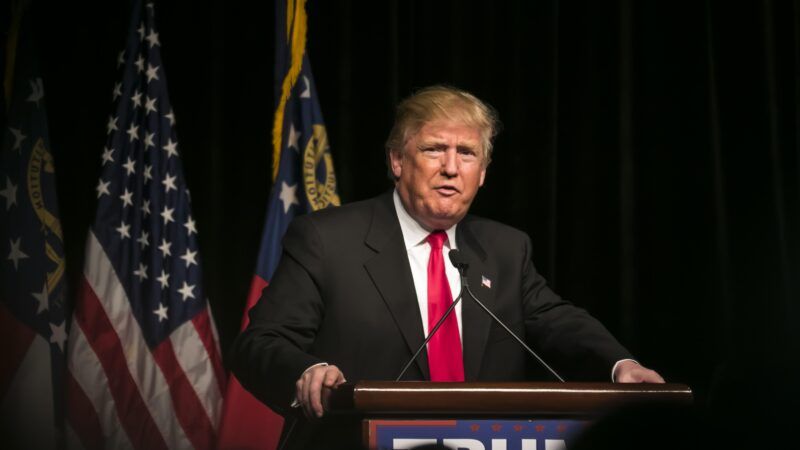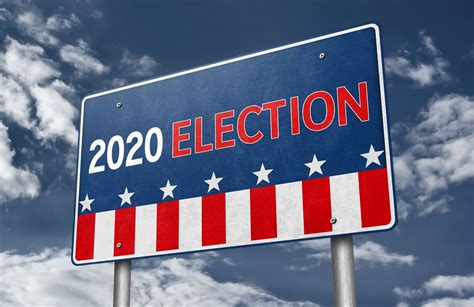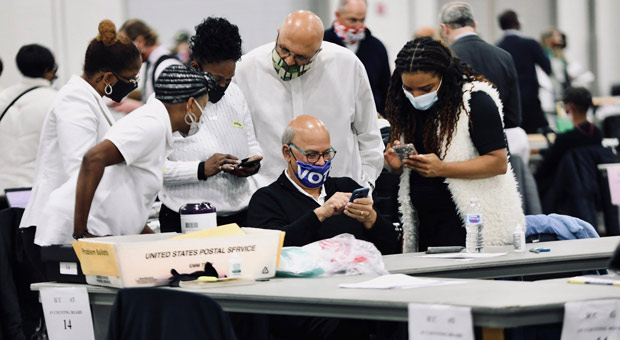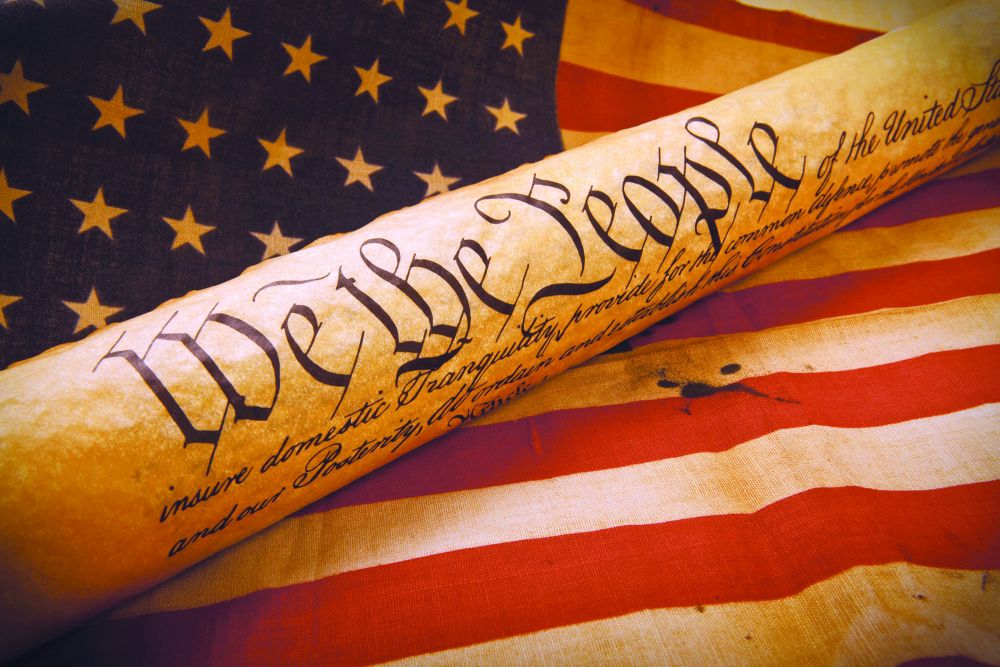Does Trump’s ‘Alternate’ Electors Plan Justify Criminal Charges Against Them and Him?
The alleged state and federal felonies involve intent elements that may be difficult to prove.
Jacob Sullum for reason.com

(imageBROKER/Walter G. Arce Sr./Newscom)
Former President Donald Trump yesterday said he had received a letter from the Justice Department indicating that he is a “target” of Special Counsel Jack Smith’s investigation of efforts to overturn Joe Biden’s victory in the 2020 presidential election. That revelation came the same day that Michigan Attorney General Dana Nessel, a Democrat, announcedcharges against 16 Republicans who had identified themselves as the state’s voter-selected electors in certificates they signed on December 14, 2020.
That maneuver, which was part of a seven-state plan to prevent congressional certification of the election results, also figures in the expected federal charges against Trump, who may yet face state charges in Michigan and Georgia in connection with the same scheme. But the state and federal charges require an intent to defraud or another improper purpose, which could be a difficult element to prove. As with other possible charges against Trump, such as conspiracy to defraud the United States, much depends on whether he sincerely believed that systematic fraud had deprived him of his rightful victory and that he was pursuing legitimate remedies for what he mistakenly perceived as a grave injustice.
One of the likely federal charges against Trump is obstruction of an official proceeding—in this case, the January 6, 2021, tally of electoral votes. A potential justification for that charge, which is a felony punishable by up to 20 years in prison, is that Trump, by encouraging Republicans in Michigan and six other battleground states to falsely present themselves as their states’ true electors, “corruptly” obstructed the congressional ceremony. Several Republican members of Congress cited those “alternate” electors as a reason for objecting to the Biden slates, and Trump repeatedly pressured Vice President Mike Pence, in public and in private, to delay or block the tally on the same basis in his capacity as president of the Senate.
Pence resisted those entreaties, saying the Constitution did not give him the power that Trump wanted him to exercise. That position enragedTrump and his supporters, including the protesters whose riot disrupted the electoral vote count, some of whom expressed a desire to “hang Mike Pence.” Pence, who is now competing with Trump for the 2024 Republican presidential nomination, yesterday said “history will hold him to account for his actions that day.” But he is skeptical of attempts to hold Trump criminally liable.
“I hope it doesn’t come to that,” Pence said. “I’m not convinced that the president acting on bad advice of a group of crank lawyers that came into the White House in the days before January 6 is actually criminal.”
Pence, like the other Republican contenders facing off against a former president with a commanding lead in the polls, is loath to offend Trump’s supporters. The point he raises is nevertheless important, because federal prosecutors would have to prove beyond a reasonable doubt that Trump acted “corruptly” when he encouraged the “alternate” electors and pressured Pence.
The “bad advice” that Pence mentioned came from “crank lawyers” like Rudy Giuliani, who may face Georgia charges for his role in the alternate-electors plan. Another important influence was John Eastman, who at the time was a Chapman University law professor. During conversations with Trump and his staff, Eastman conceded that Pence’s intervention would violate the Electoral Count Act, but he argued that the statute was unconstitutional.
It is plausible, given everything we know about Trump, that he favored advice from lawyers who told him what he wanted to hear. It is also plausible, although by no means clear, that he honestly believed he had won reelection and eagerly latched onto any claim, no matter how specious, that reinforced his conviction. If so, it is hard to see how he acted “corruptly,” because he thought his purpose was proper.
The state charges against Michigan’s would-be electors present a similar puzzle. They face eight felony counts, including various forgery-related charges, all of which hinge on intent. Conspiracy to commit forgery, for example, requires a scheme to “falsely make, alter, forge, or counterfeit a public record, with intent to injure or defraud.” The 16 defendants did that, Nessel says, by signing “fraudulent ‘Certificates of Votes’” identifying themselves as Michigan’s electors. But if they honestly believed that the official results were decisively corrupted by tricky election software, phony ballot dumps, or other kinds of chicanery—meaning they were in fact the true electors—it is doubtful that they had an “intent to injure or defraud.”
That defense is arguably supported by historical precedent for dueling slates of electors, each of which claimed to be the genuine article. After the 1960 presidential election, for example, there was a dispute about whether John F. Kennedy or Richard Nixon had won Hawaii. As Politiconoted in its 2022 account of that dispute, it has become a touchstone for Republicans who argue that Trump’s “fake electors” (as The New York Timesreflexively calls them) did nothing improper, or at least nothing criminal.
“Nixon had prevailed by just 140 votes, according to the initial results, which were certified by the governor,” Politico noted. When Democratic and Republican electors met on December 19, 1960, a recount was underway, and both groups signed certificates that they sent to Washington, D.C. Although they did not reflect the official results, the Democrats’ certificates unambiguously identified them as “duly and legally appointed and qualified” Electoral College members. They did not mention Nixon’s certified victory or the recount.
In five of the seven states that Trump’s supporters identified as disputed in 2020, the would-be electors did essentially the same thing. But in Pennsylvania and New Mexico, Politico reported, they “included a caveat: their votes would only be counted if ongoing court battles broke in favor of Trump.”
Kennedy, who did not need Hawaii’s three electoral votes to win the national contest, “prevailed by an eyelash when the recount concluded on Dec. 28, 1960,” Politico noted. “A newly sworn-in governor certified the Kennedy victory and transmitted a new slate of Electoral College certificates—signed by the same three Democrats who falsely claimed to have won two weeks earlier.”
Those three electors were legitimate, a state judge, Ronald Jamieson, concluded on January 4, 1960. He “said it was important that those electors met and gathered on Dec. 19, 1960, as prescribed by the Electoral Count Act.”
Two days later, Nixon, then vice president, oversaw the congressional count of electoral votes: “He acknowledged receiving all three sets of certificates: the GOP slate, the uncertified Democratic slate and the certified Democratic slate. He then agreed that the newest one—the Democrats certified by Gov. William Quinn—should be counted, even though they were certified weeks after the required meeting of the Electoral College.” That slate, Nixon said, “properly and legally portrays the facts with respect to the electors chosen by the people of Hawaii.” No one faced criminal charges over the Democrats’ seemingly fraudulent December 19 certificates.
In contrast with what happened in 1960, when there was a genuine, fact-based dispute about the outcome in Hawaii, the self-certified Trump electors in Michigan relied on unsubstantiated fraud claims that were never accepted by election officials or the courts. But they may have imagined that a similar scenario would play out, this time involving multiple states and much bigger stakes. However far-fetched that expectation may have been, Jamieson’s retroactive validation of the Kennedy electors’ premature certificates and Nixon’s acceptance of their votes may have lent credence to the idea.
Under Michigan’s forgery statutes, in any case, what really matters is whether the defendants believed their conduct was a legitimate way to preserve objections they thought were well-grounded. If so, their intent was not “to injure or defraud”; it was to correct the consequences of a massive fraud, albeit an imaginary one.
“I’m very disappointed in the attorney general’s office,” a lawyer for one of the Michigan defendants told the Times. “This is all political, obviously. If they want to charge my client, how come they didn’t charge Trump and the Trump lawyers that he sent here to discuss with the delegates what to do?”
That may yet happen. Nessel said her investigation is ongoing, and Fulton County, Georgia, District Attorney Fani T. Willis is considering charges against Trump and his lawyers based on their attempts to reverse Biden’s victory, including the alternate-electors scheme. But those potential prosecutions would face a similar obstacle, and so would federal charges based on the same conduct.
Were Giuliani and Eastman true believers? They certainly acted as if they were. What about Trump? I honestly don’t know; there is evidencepointing in both directions. But when the evidence is mixed or ambiguous, prosecutors may have a hard time making their case beyond a reasonable doubt.




